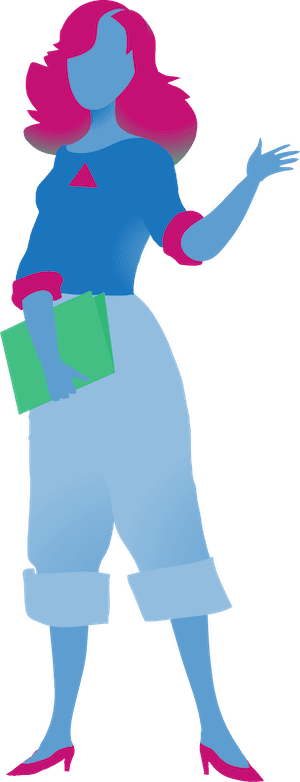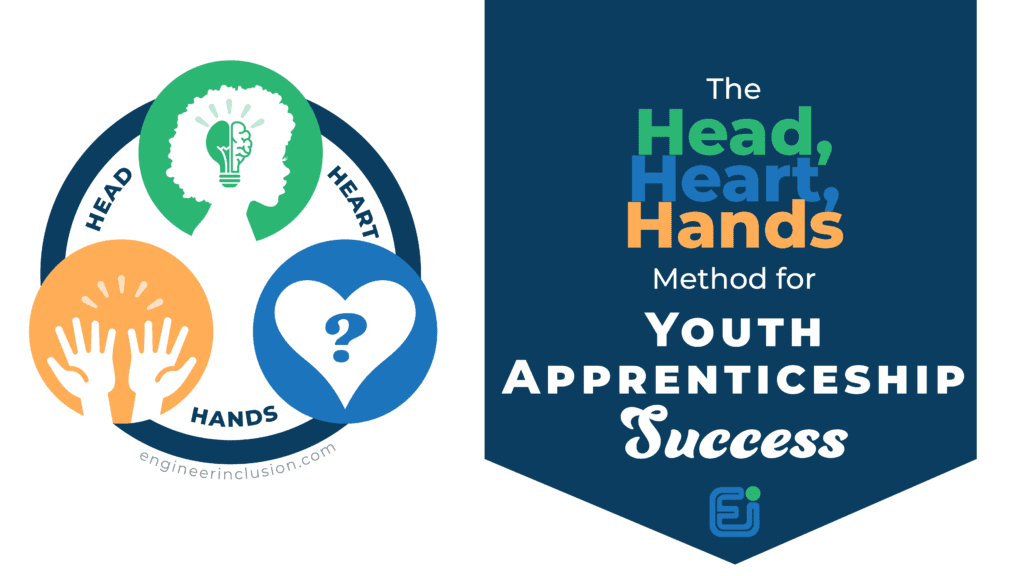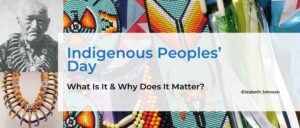
Why I Put My Personal Pronouns on My Email Signature, Social Media Profiles, and Nametags, and Why You Should Too
The simple answer is because it normalizes the sharing of pronouns for more inclusive spaces.
First, check out each of the included definitions. This is important for framing your understanding of why pronouns matter. I then offer a brief explanation on gender-neutral pronouns, offer my recommendations for what you can do, and answer a few frequently asked questions.

Hi! I’m Meagan Pollock. I am a woman. When meeting me, it is easy to recognize what my gender identity might be, based on my features and style. However, with some people, you might be wrong. Therefore, the best practice is not to assume someone’s gender identity.
I choose to share my pronouns to normalize the practice. People who are trans or genderqueer then have space to share their pronouns with less awkward questioning, and hopefully less incorrect gender assignments.
Review each of these definitions to help you begin to understand why pronouns matter.
Infants receive a sex assignment at birth, based on biological differences between males and females, such as the genitalia and genetic differences.
An umbrella term describing people born with reproductive or sexual anatomy and or a chromosome pattern not classifiable as typically male or female. Avoid the outdated and derogatory term “hermaphrodite.”
Gender is a socially constructed system of classification that ascribes qualities of masculinity and femininity to people.
Gender identity is a person’s internal sense of themselves as a specific gender. It may or may not match their assigned sex at birth.
Gender Expression (or gender image, gender display) is the external presentation of self as gendered through cultural identifiers/markers such as clothing, behaviors, etc. Gender expression does not always match gender identity.
A cisgender person has a personal identity and gender expression that corresponds with their birth sex.
Genderqueer is a self-identifying term for someone who rejects the male/female gender binary in favor of a more fluid, nontraditional identity that merges or blurs characteristics of gender and gender norms. Rejecting gender norms doesn’t make you genderqueer unless you want to identify as such. (So let’s keep blasting gender norms!)
Transgender is an umbrella term for people whose gender identity and or expression is different from cultural expectations based on the sex assigned at birth. Being transgender does not imply any specific sexual orientation. Therefore, transgender people may identify as straight, gay, lesbian, bisexual, etc. The abbreviated trans is also commonly used.
Sex is biological. Gender is not.
Why should you care?
The tough-love truth.
If you are a kind person who wants others to feel accepted, included, and valued, then you care about calling people by their preferred name and pronouns.
If you want to intentionally cause others to feel rejected, excluded, and devalued, then stick to what makes you comfortable.
Please, choose wisely.
Examples of personal pronouns.

The gender-neutral pronoun "they" is used by singular persons who identify as non-binary or other, or reject the traditional gender binary of she and he.
But wait! Aren't they/them/theirs only plural pronouns?
No. In 2015, the American Dialect Society named it the word of the year, and the Washington Post added “they” to their style guide for use as a singular pronoun. However, we’ve used “they” as a singular pronoun for centuries, when gender identity was unknown.
For many of us, it is confusing to our brains if we assume someone’s gender or if we have known someone as one gender identity, and they later prefer another set of pronouns. I get it, but we are capable of using the word “they” as a singular pronoun. It just takes intent and practice.
I have started adding they/them to my shared pronouns in some places to 1) jolt people into possibly reconsidering gender norms, and 2) to normalize the use of “they” pronouns. We don’t need gendered pronouns anyways. All they do is reinforce gender norms and power structures, but that is a conversation for another day.
What can you do?
Try these three things and make it a habit.
Introductions
When you introduce yourself, include your pronouns: "Hi, I'm Meagan, and my pronouns are she/her or they/their." If someone else wants to then share their pronouns with you, they can. If not, move on.
Nametags
When you write a name tag or table tent, include your pronouns below your name. Wear your name high near your shoulder so that people don't have to search for it, or scan your body.
Profiles
Add your pronouns to your email signature and social profiles. Feel free to add a link to this page or a similar one to help others understand why they should include their pronouns, too.
Frequently Asked Questions
First of all, who cares? Secondly, it could be an opportunity to help educate others on the importance of sharing pronouns. Finally, people who are not cisgender might be grateful.
Depending on your relationship with them, you can ask, “What pronouns do you prefer?” It might be awkward. But the awkwardness of a few seconds is better than continuing to call someone by something that could be triggering to them every time you speak.
I recently asked someone I’ve known for a decade that question, and they told me that they now prefer gender-neutral pronouns. I told them that it was important to me to get it right and that I would practice with intent. I also apologized for when I am incorrect and invited them to let me know if I slip up.
Apologize sincerely, do better, and move on.











